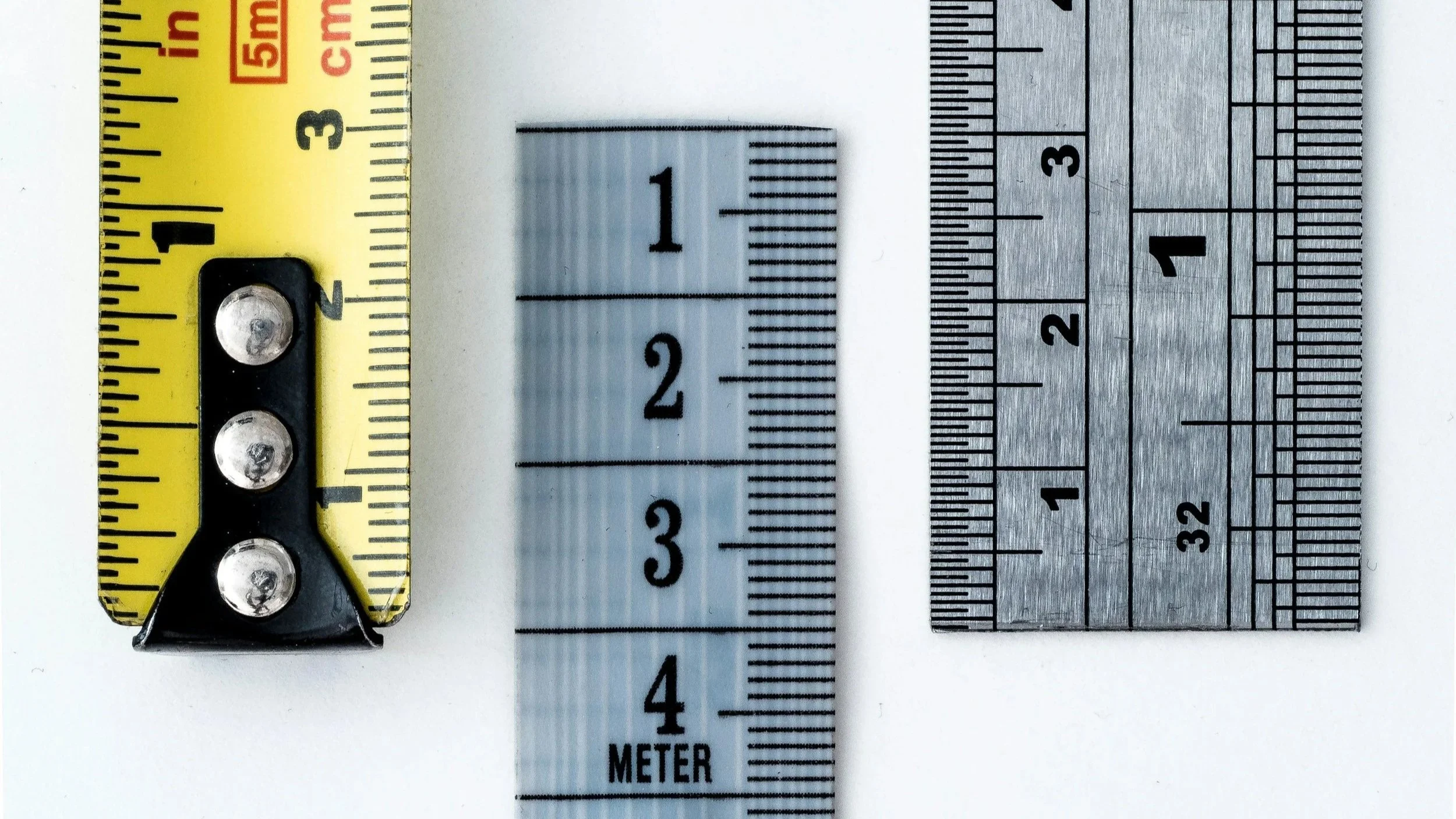The Median Wage
Visa applications are complicated…not because they were intended to be that way, but because when you are trying to ensure that you bring the right people in to your country, you need a very well structured set of criteria and rules. However, I am not sure that they should require a degree in quantum mechanics to decode - and for some applicants, trying to understand some of these rules is a little bit like calculating the trajectory for Rocket Lab’s next launch program.
There is one area of our current skilled migrant category system that is causing a growing number of applicants to scratch their heads and that is the median wage rate calculation. The median wage isn’t, on its own, a complex part of the process, but the fact that the median wage changes over time, and those changes may well have an impact on how and if you qualify, then simple becomes complex pretty quickly.
This confusion will only increase as more applicants find themselves at the point of being able to apply for residence, having completed at least two years of work experience here, with many of those applicants reaching that point now, just as the median wage is set to increase again on 18 August.
What people often fail to add in to the calculation is which rate applies and when it applies and whether they have had to have a change in their wage rate, to match the updated median wage and when that change might have had to take place. If that sentence made your head itch, then keep reading. In an attempt to help people work this all out, we are going to decode the median wage requirements in as simple a way as we can - with examples of how this all works and when it doesn’t.
How Is The Median Wage Applied?
The median wage was introduced partly as a means to simplify processing of applications for immigration officers. By setting the median wage as the absolute minimum a skilled migrant applicant had to earn, it immediately created a minimum skill threshold. If you were below the median wage rate, then your job would not be considered skilled, regardless of what you were actually doing.
Over time the median wage has played an ever increasing role in both temporary and resident visas policies, until earlier this year, when the median wage was taken out of the equation for work visas and replaced with a “market rate” assessment. The intention was good, but unfortunately asking immigration officers to assess if what someone is being paid is a “market rate” creates its own headaches.
However for residence, the median wage remains a key component and the fact that it applies there, but not for work visas will, potentially, add to the confusion over time. For now however we are going to break down how the rate is applied for applicants, considering a move to residence, using their NZ employment and potentially the work experience they have gained here to make that happen.
How Does It Work?
INZ uses the median wage as a measure of skill, and different rates apply depending on the residence pathway you are pursuing.
The current median wage for the skilled migrant category is $31.61 per hour, however as of 18 August that rate will increase to $33.56 per hour. In terms of those being paid an annual salary, INZ still looks at how much that means per hour…e.g. your salary divided by 52 and then by the hours you work per week. Everything revolves around that hourly rate calculation.
The tricky part is understanding when and which rate applies to you and this essentially boils down to three points on your immigration map.
Point 1 (Residence Application Date) - You need to be earning the current median wage at the time your application for residence is filed. So for example if you file your application for residence today (15 August) you need to be paid at least $31.61 per hour - if you were to file on Monday of next week, that hourly rate would have to go up to $33.56 in order for your application to qualify.
Point 2 (Work Experience Start Date) - If you are claiming points for work experience under the points system or you are applying under the work to residence (Green List) category, needing two years of that experience, then the next calculation you need to do is work out the rate that applied on the date that work experience started. The following table shows which rate applied and when.
The median wage increases to $33.56 from 18 August 2025
So if you are claiming two years of work experience and you started that experience on 18 August 2023, the median rate required at that time would be $29.66 per hour.
If you started your role on 10 March 2024 and are aiming to apply for residence on 10 March 2026, then your hourly rate needs to have been $31.61 per hour from the date you started (in 2024).
You can use the same calculation and table, if you are claiming points for income and needing to earn 1.5 times the median for three years or twice the median for two years of experience to qualify for points.
This also applies to any category where work experience is required, with one significant exception. If you are applying under the Green List and your occupation has a specific salary threshold (some occupations list salaries higher than the median), then that is the rate that applies and must have been earned from the start of your work experience period and all the way throughout that experience.
Point 3 (Employment Change) - The last stop on the median wage tour is knowing when or if your wage needs to increase, between Point 1 (your work experience start date) and Point 2 (your residence application date). The simple answer here is that it only needs to change if your employment changes. For example, if you secure a new job during your period of work experience and complete a Job Change or new Work Visa application, then the rate for that new job must match the median wage in effect at that time. So for example, if you started working in New Zealand on 10 December 2023 at $29.66 per hour and then secured a new job on 10 June 2024, the new job would have to be paid $31.61 per hour in order for that experience to continue to be counted.
So if you are sitting in New Zealand, counting down the days until you have accumulated enough work experience before filing for residence, I would encourage you to do this quick three step check (using the table above):
What rate did I start on and was it at the right rate based on the dates in the table above.
Did I change jobs and if so, was the new rate at the right rate based on the table above.
What rate will I need when I apply for residence (e.g. what is the current rate).
If you are still confused (and no one would blame you) then obviously we can run the numbers, do the math and hopefully clarify the way forward for you. This whole process is catching people out, particularly those who arrived here after February 2024 on the old work visas median ($29.66), when the SMC median wage moved to $31.61 per hour. Along with those who have changed jobs but not wage rates, there are going to be some interesting and potentially interesting times ahead.
Is The Median Wage The Right Measure?
The use of the median wage is actually a relatively new measure, adopted in 2020, just before the country closed the border. Prior to this we had a high and low skill threshold instead, using the Australia and New Zealand Standard Classification of Occupations (ANZSCO), coupled with specified salary bands and before that we simply relied on market rates. So the adoption of salary and wages as a measure and gauge of skill is something that has gradually been introduced but has also had to adapt over time. The change however from fixed wage levels that INZ adjusted periodically to median wages, which move every year, based on economic data was a way to standardise the process.
A Proxy For Skills
The median wage was introduced in a means to drive higher skilled migration, level the playing field and also to simplify the assessment process.
The aim in introducing salary levels was to create a more level playing field in assessments, drive a higher calibre of migrant, and also to ensure that applicants were not being disadvantaged with lower than market rates.
Equally it was an advantage to INZ, given it took some of the assessment process away in not having to work out what was and wasn’t a fair market rate of pay. Over time, wages became somewhat of a proxy for skill, which was always going to be problematic. The biggest issue we have now however is the moving target that median wages create and the rather bizarre calculations that people have to do to figure out if they have been on the right track - start, middle and end. It is also somewhat strange that your rate might have to increase, even the day before you apply for residence just to tick that particular box - almost an INZ induced pay rise.
There is also a significant disconnect between rates and how they apply to different visas. Initially median rates were applied to both work and resident visas equally, then the resident visa rate increased but the work visa rate stayed the same and then eventually the median wage was removed from work visas altogether. This mish-mash of rates applied inconsistently is what could lead a good number of applicants to a possible decline, and really does need to be fixed.
It also seems bizarre to grant someone the right to work here on a work visa on one pay rate, but then deny them the right to live here, based on the same job, same skills and same set of circumstances, simply because that pay-rate is different by a couple of dollars for another category. Even stranger to make them change it the day before they apply for residence and then say - “oh well that’s fine then”. It is arguably the skills we want, and if we were happy enough with what they were being paid when we granted the work visa, then any increases would be reflective of performance and market conditions - not the visa rule book.
What Is The Alternative?
The obvious alternative is to return to the previous use of market rates, which essentially required officers to consider what the market would pay for that job and those skills - however this was problematic and has proven to be so again. Earlier this year, INZ removed the median wage assessment from the accredited employer work visa, reverting back to an assessment of market rates.
The issue here is that no one knows which market rates to use and they vary greatly. Sources such as recruitment companies are sometimes inflated for obvious reasons and other sources provide to wide a range or a range that isn’t necessarily reflective of the local labour market. What you pay someone to do a particular role in Auckland will differ to what you might pay that same person, in the same role, in Timaru.
Market rates also doesn’t give INZ much room to consider the size or nature of the employer, e.g. start-ups or small businesses that may not pay as much but offer better perks or conditions. So far the new market rate experiment with the AEWV has been a bit of a nightmare, with officers demanding astronomically high salary levels for roles that should be much lower on the pay-scale.
Measuring Skills
How we measure skill does include an assessment of what someone is being paid, but it’s also a whole lot more.
The problem with market rates however is relying on individual officers to try and use narrowly defined open-source tools to try and work out what Bob the plumber should be paid.
However, now that we have far more clever tools (namely AI), it wouldn’t be hard for INZ to establish its own, regularly updated market rate tables for all occupations, using existing data as a the base point and then revising this annually inline with the median wage changes.
For the most part, employers pay the right amount and so in reality, the level of pay and whether that is a concern is generally only a concern in a small number of occupations that INZ has always had to battle with. However creating some certainty for applicants and employers before they file Job Checks or AEWV applications would be a significant bonus.
In terms of the skilled migrant category, I would suggest reconsidering the need to meet the median rate (for most occupations) for work experience at the start (Point 2 in our list), given INZ approved a work visa for that role based on what they deemed to be an acceptable rate for those skills. I would also rethink Point 3 where the rate has to change at the point of a Job Change being filed, and perhaps simply require the rate to stay the same or higher than the starting rate. There are some exceptions to this however (see below). Arguably we have given these applicants a work visa, based on being satisfied that their pay is adequate (based on the market rate assessment) and so making it overly complicated with different rates for different visas, just creates unnecessary confusion.
As to Point 1 and needing to meet the median wage at the time the residence application is filed, I would be in favour of reverting to market rates for most occupations, provided we had a market rate measure that was reliable, consistent and managed (giving officers less need to think or compare rates). This would mean that applicants don’t have to have a sudden pay increase, the day before the application for residence is filed, in the event the rate has moved.
The exceptions to this would be for the roles that INZ struggles with, because they are often exploited or claimed as skilled when they aren’t. Median wages could be used for these roles and any other roles where the reigns need to be tightened, or we are looking for a much higher calibre of applicant. For example some trade roles, retail managers, hospitality managers, chefs, all of which can be misrepresented - some of these roles already have wage rates applied (see the Green List occupations), across the period of time they need to be worked in, and those should remain, however we could also apply this to other roles in a way to manage them better. The list of those roles wouldn’t be exhaustive at all, because again, most occupations are paid at the right rate anyway.
Median wages can be used, as a tool to manage certain occupations and ensuring we get the right levels of skill, but using them across the board, and inconsistently across different visas, has created more problems than solutions.
Let Us Do The Math
We are currently seeing a growing number of applicants who are realising now that their pay rate either wasn’t right at the start of their work experience, or they have changed jobs but the rate hasn’t changed along with them. Also given the increase set to take place on 18 August, coupled with tougher economic conditions for employers, there are plenty of applicants who now have to negotiate a pay-rise before they can consider filing for residence.
It can be incredibly complicated to work all this out, given the shifting nature of wage rates, how they are applied and when, and so if you are thinking about applying for residence in the near future (once you manage to lock that pay rise in), and want to know if you have been on the right rate across the time you have spent in New Zealand, then get in touch with us today.
We will be able to cross-check your details, and provide you with an accurate assessment of your ability to apply, outline what you will need to provide INZ as proof of meeting the various rates that apply, as well as being able to guide you through the process from start to finish.
For some applicants a few dollars here and there, could be the difference between success and failure and given work visas have a limited duration attached to them, getting this part right as soon as possible is really important - particularly if you need more time to catch up on work experience, paid at the right rate, that you might have missed out on.
I certainly hope that with the skilled migrant category currently under review, that that application of the median wage is considered, because it shouldn’t take a degree in rocket science to work all this out.
Until next week.





